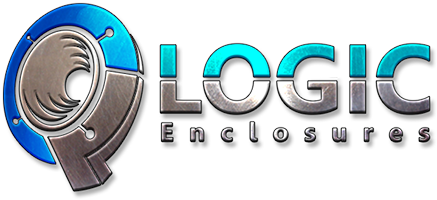FAQs
Q Forms
Q: Where are the kick panels in my vehicle?
A: The kick panel is the interior surface just forward of the front doors and below the dash. Believe it or not, some vehicles did have speakers installed here as early as the 1960s.
Q: Do you offer Q-Forms kick panels to fit my vehicle?
A: We have over 125 different applications in stock. To see if we have an application to fit your vehicle CLICK HERE.
Q: I have an unusual or custom vehicle (Chevy Motor in a Ford with a MOPAR rear-end kinda’ thing . . . we get you . . . ), do you make a universal Q-Forms kick panel that I could custom fit to my application?
A: Actually we do! CLICK HERE to be directed to them.
Q: If I purchase a pair of Q-Forms kick panels, what else will I need to get my speakers installed?
A: Everything you need to attach the Q-Forms kick panels to your vehicle is included and varies based on the specific kit. All Q-Forms kick panels include PolyFil stuffing and step by step instructions.
Q: How difficult is it to install a pair of Q-Forms kick panels?
A: If you enjoy working on your own vehicle, have some basic mechanical skills, and have an average set of hand tools, installing a pair of kick panels in your vehicle is really pretty simple!
Q: Where are Q-Forms kick panels made?
A: All Q-Forms kick panels are proudly MADE IN THE USA from domestically and globally sourced parts.
Q-Customs Enclosures
Q: Do you offer a Q-Customs Enclosure to fit my vehicle?
A: We have over 135 different applications in stock. To see if we have an application to fit your vehicle CLICK HERE.
Q: What are Q-Customs Enclosure made of?
A: All Q-Customs Enclosures are made of a combination of Medium Density Fiberboard (MDF) and injection molded plastic.
Q: If I purchase an enclosure from Q-Logic, what else will I need to get my subwoofer(s) installed?
A: Nothing! All Q-Logic enclosures are sold as complete kits and include everything you’ll need to properly install your subwoofer(s) – terminal cups, wiring, mounting screws, PolyFil stuffing, and a comprehensive installation manual are included in every kit.
Q: How difficult is it to install my subwoofer(s) in a Q-Customs Enclosure?
A: If you enjoy working on your own vehicle, have some basic mechanical skills, and have an average set of hand tools, installing your subwoofer(s) in a Q-Customs Enclosure is a walk in the park!
Q: Where are Q-Customs Enclosures made?
A: All Q-Customs Enclosures are proudly MADE IN THE USA from domestically and globally sourced parts.
General
Q: Which is better, a SVC or DVC subwoofer?
A: EXCELLENT question! DVC (dual voice coil) subwoofers typically offer several advantages over their SVC (single voice coil) brethren as they have two voice coils:
- Increased power handling due to the additional copper the voice coils are wound with
- Lower frequency response capability (albeit slight) due to the increased mass from the weight of the additional copper the voice coils are wound with
- Increased installation flexibility – IE, a 4Ω DVC woofer can be wired as a:
o 4Ω load to each of two channels of a power amplifier
o 2Ω load to one channel of a power amplifier with its coils connected in parallel
o 8Ω load to one channel of a power amplifier with its coils connected in series
We recommend that you choose the one that fits your application best. It is worth noting that most manufacturers offer their more expensive woofers in DVC only though . . .
Q: Did one of the founding partners of Q-Logic really turn down an opportunity to sponsor Garth Brooks back before he was famous?
A: Yes, this is true! Back in the days before Garth Brooks achieved fame, founding partner Bill Basore did in fact turn down several opportunities to help this aspiring artist get started.
Q: What is “Flat Frequency Response?”
A: “Flat Frequency Response” means the frequency response* is without major peaks or dips. This frequency response* can span a narrow range of frequencies, such as a subwoofer (20 Hz – 80 Hz or so), or a wide range of frequencies, like that of a pair of component speakers (80 Hz – 20,000 Hz or so). To be considered “Flat” there should be no more than a +3dB or -3dB deviation in the measured response – this is sometimes written as +/- 3dB.
